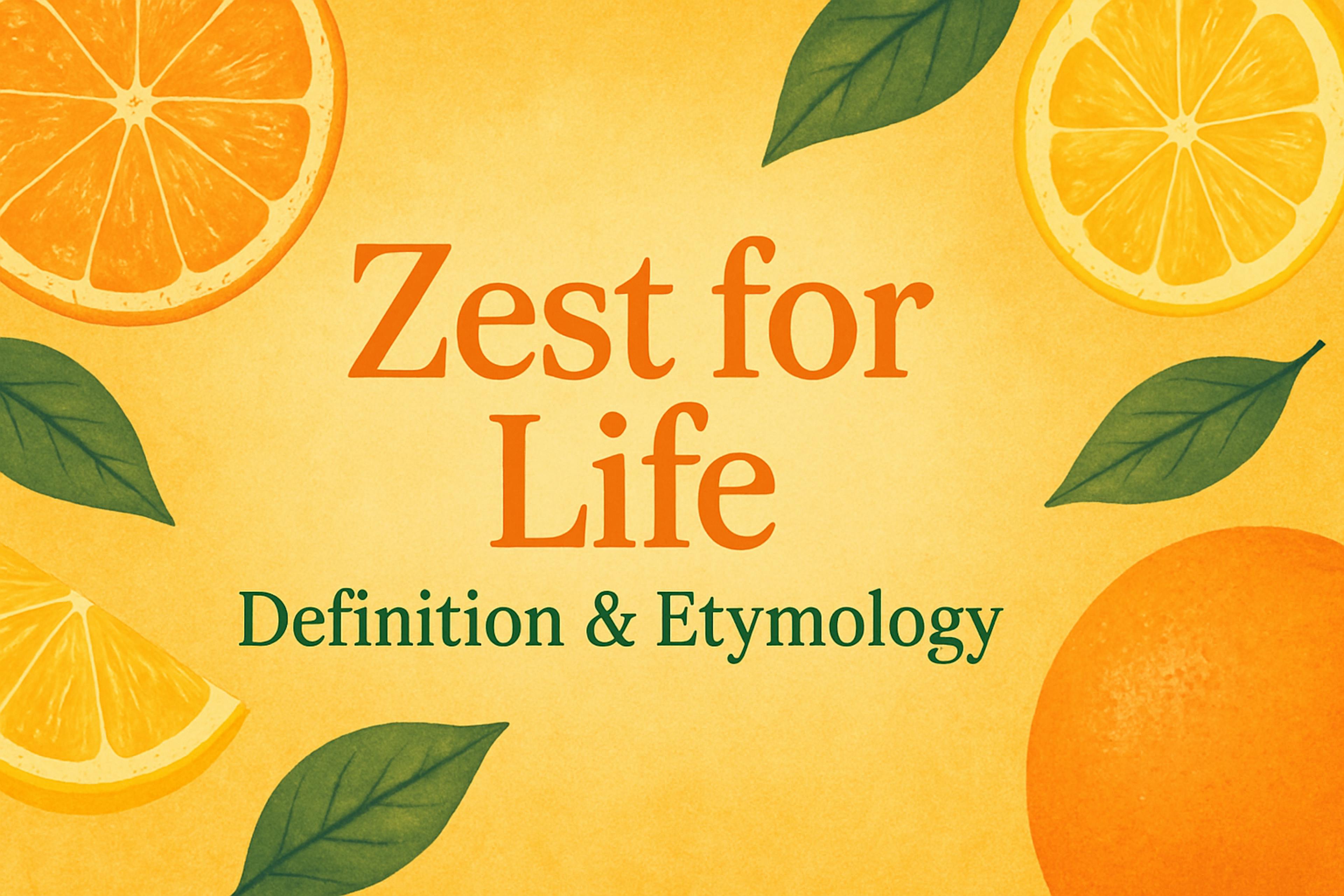What Does It Mean to Have a “Zest for Life”?
“Zest for life” is the vigorous enthusiasm and enjoyment that flavors everything you do—much like a twist of citrus brightens a dish.
Quick Definition
A zest for life is an observable attitude of keen enjoyment, energy, and optimism toward daily experiences. People with high zest approach challenges with curiosity, savor everyday moments, and radiate contagious enthusiasm.
Where the Phrase Comes From
- 17th‑century kitchens. Zest entered English from French zeste, meaning a thin strip of citrus peel used to add flavor to food and drinks.
- Shift to metaphor. By the early 1700s it referred to anything that adds excitement or relish; by 1791 Dr. Samuel Johnson was using zest to mean “keen enjoyment.”
- Modern idiom. Pairing zest with life crystallized in the 20th century, capturing the idea of living with spirited flavor.
Zest as a Character Strength
Positive‑psychology researchers list Zest among 24 universal character strengths (VIA Institute). It sits in the virtue family of Courage and is defined as “approaching life with excitement and energy; feeling alive and activated.” Studies link higher zest scores to:
- Greater life satisfaction and resilience
- Lower rates of depression and burnout
- Stronger social connections and work engagement
Why Zest Matters for Mental Health
Cultivating zest amplifies protective factors that underlie good mental health:
- Positive emotion: enthusiasm boosts dopamine and counters anhedonia.
- Behavioral activation: energetic engagement breaks cycles of avoidance common in anxiety & depression.
- Meaning & purpose: zestful people report higher eudaimonic well‑being.
- Social contagion: enthusiasm attracts support networks and deepens relationships.
In short, having zest is not merely a personality quirk—it’s a measurable buffer against mental‑health challenges.
Five Research‑Backed Ways to Spark More Zest
- Savor something small each day—mindfully notice taste, sound, or color for 20 seconds.
- Do a strengths‑spotting exercise: recall a recent success and identify the strengths you used.
- Move your body—even a brisk 10‑minute walk raises energy and mood.
- Seek novelty: try a new recipe, route, or hobby every week.
- Join a supportive group where positivity is modeled and celebrated (see below!).
How ZestLife Helps
ZestLife’s therapy & support groups are designed to re‑ignite zest:
- Evidence‑based group formats that normalize struggle and build momentum together.
- Expert‑led sessions targeting resilience, self‑compassion, and joy.
- Flexible in‑person & virtual cohorts so you can plug enthusiasm into your real schedule.
Ready to add more flavor to your days? Browse upcoming mental health groups.
